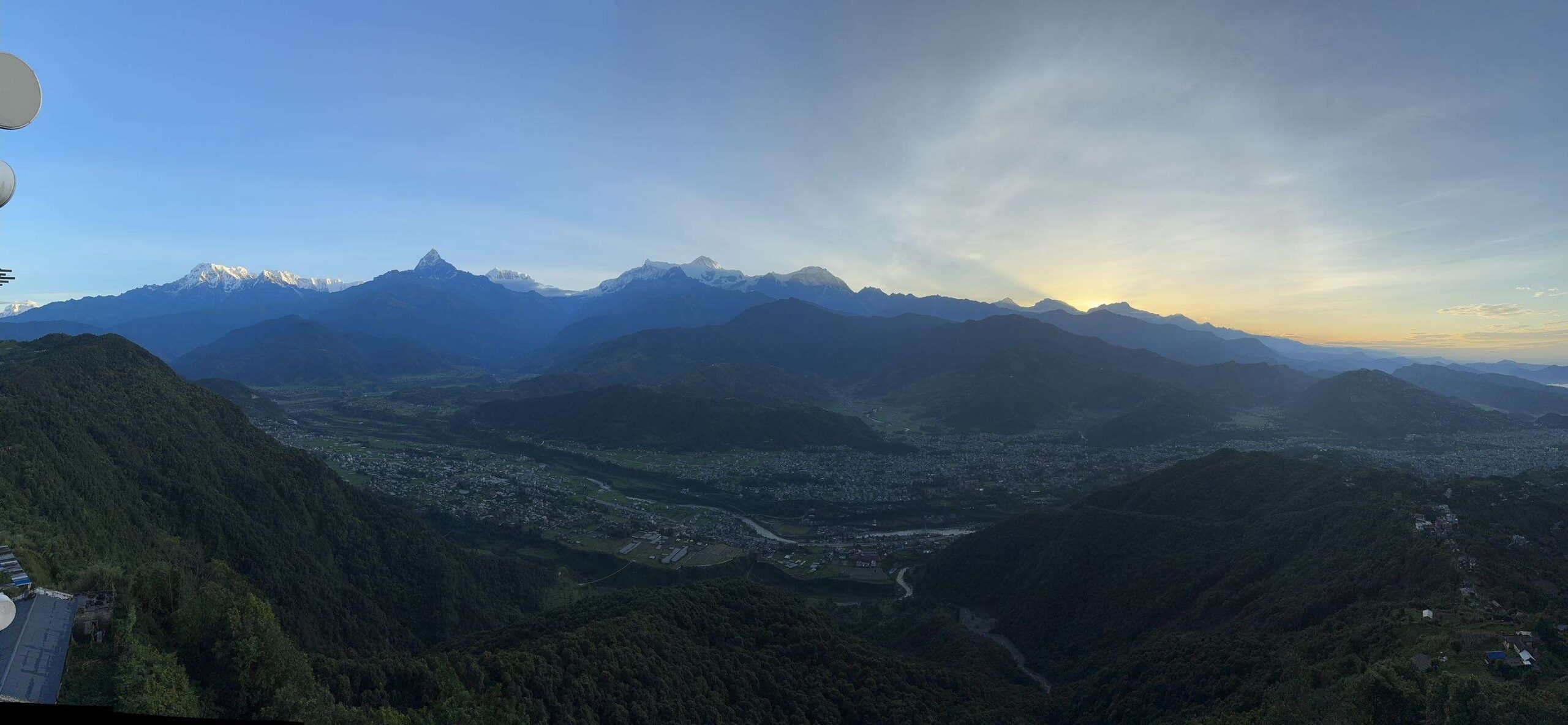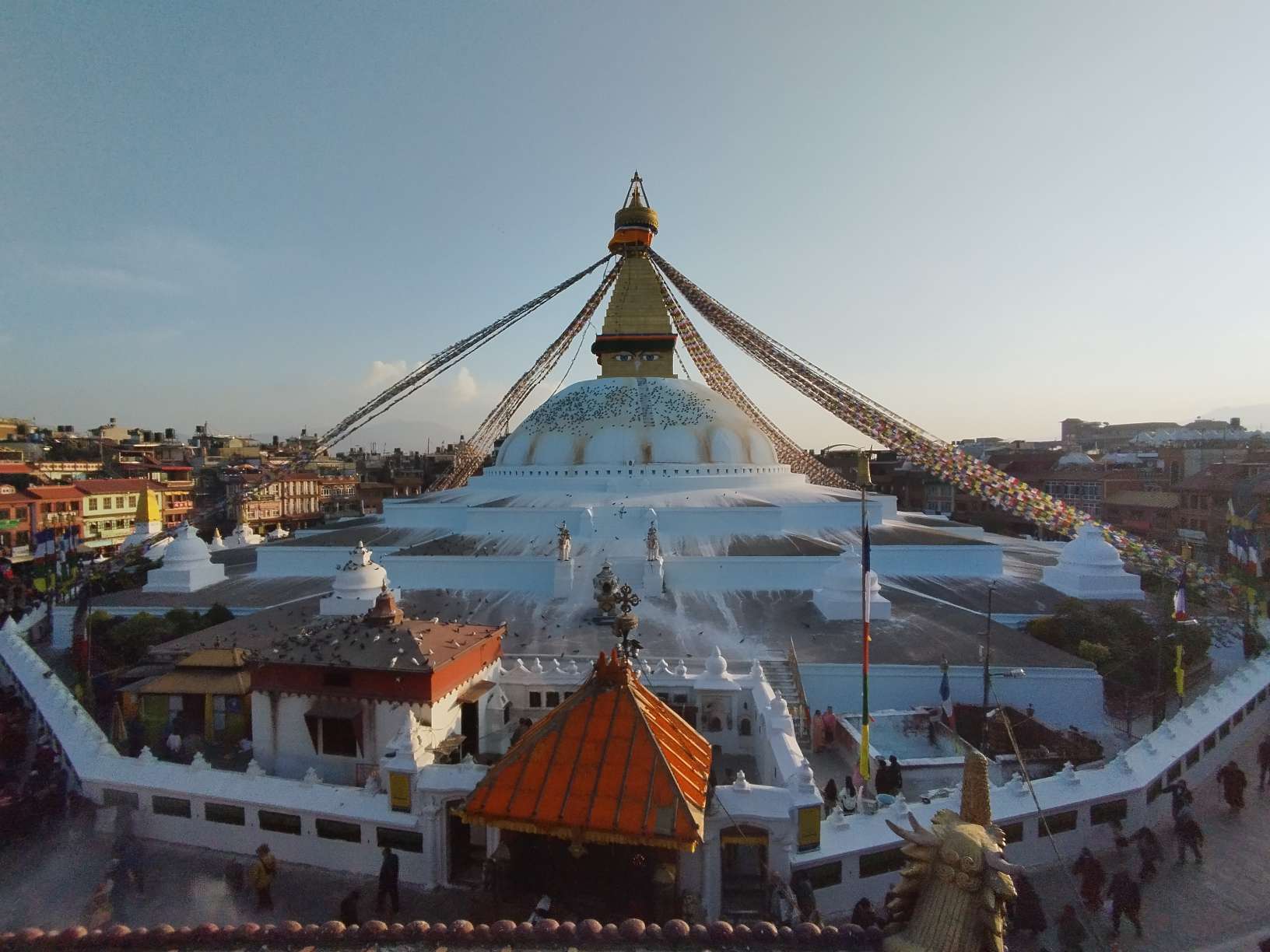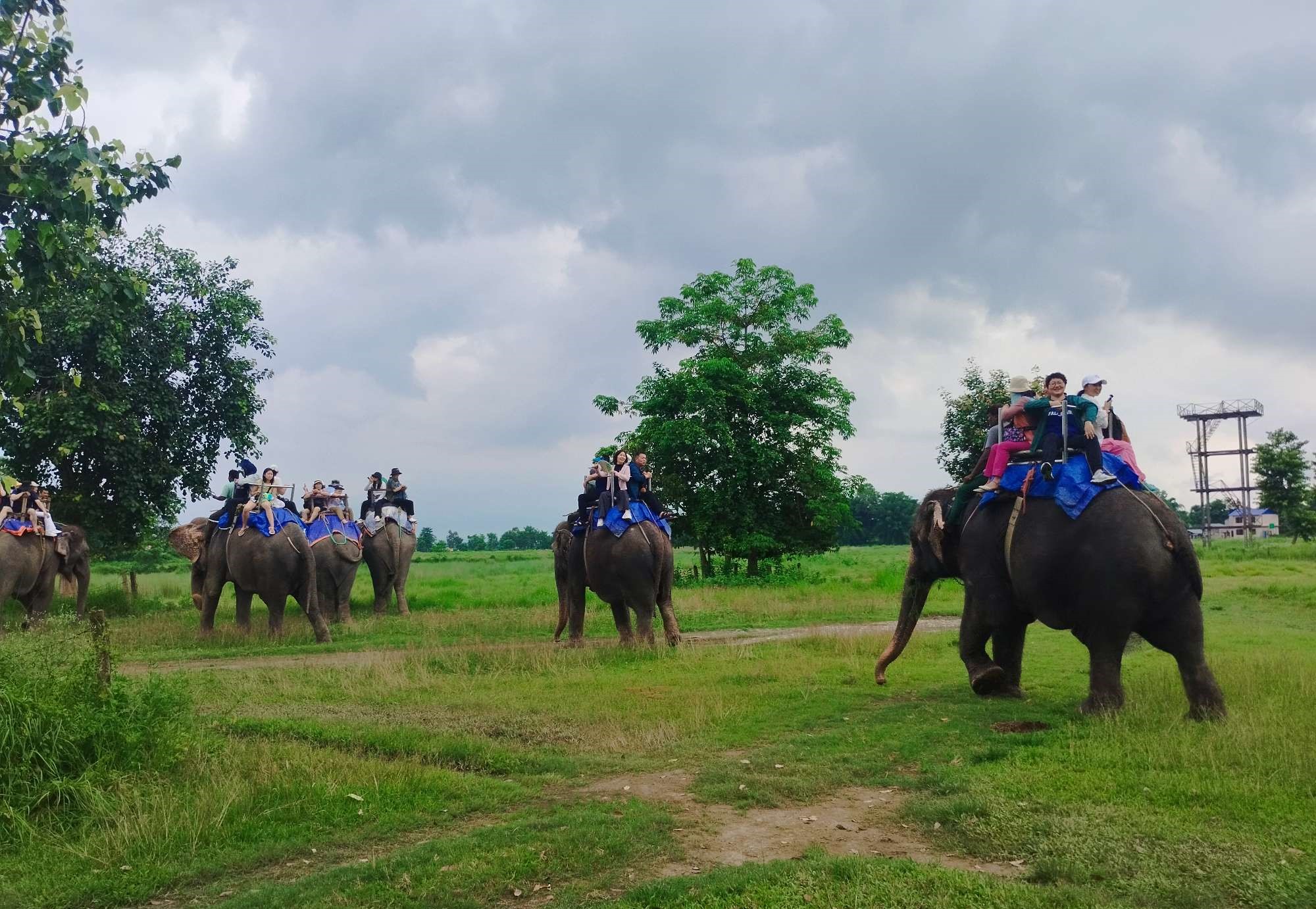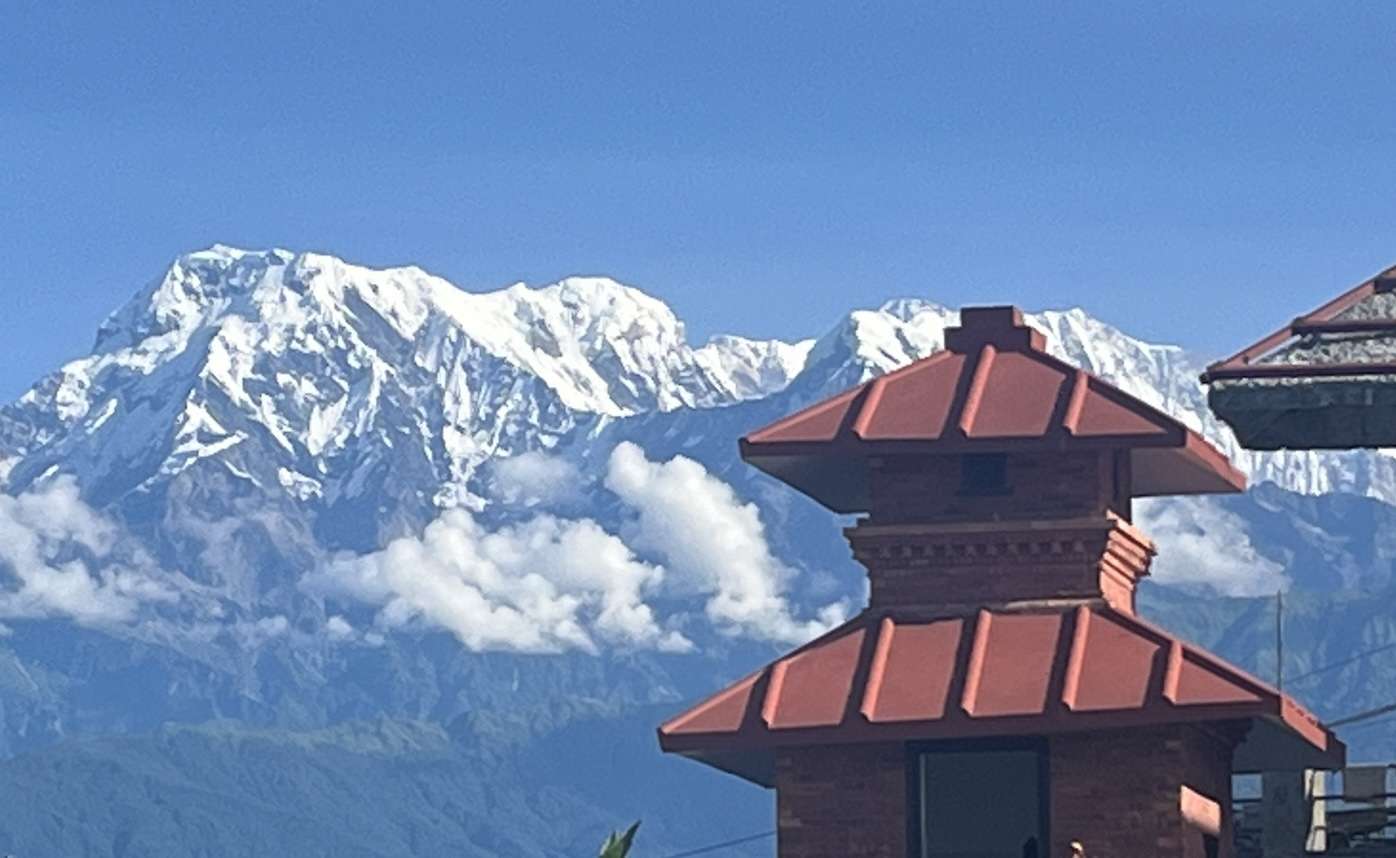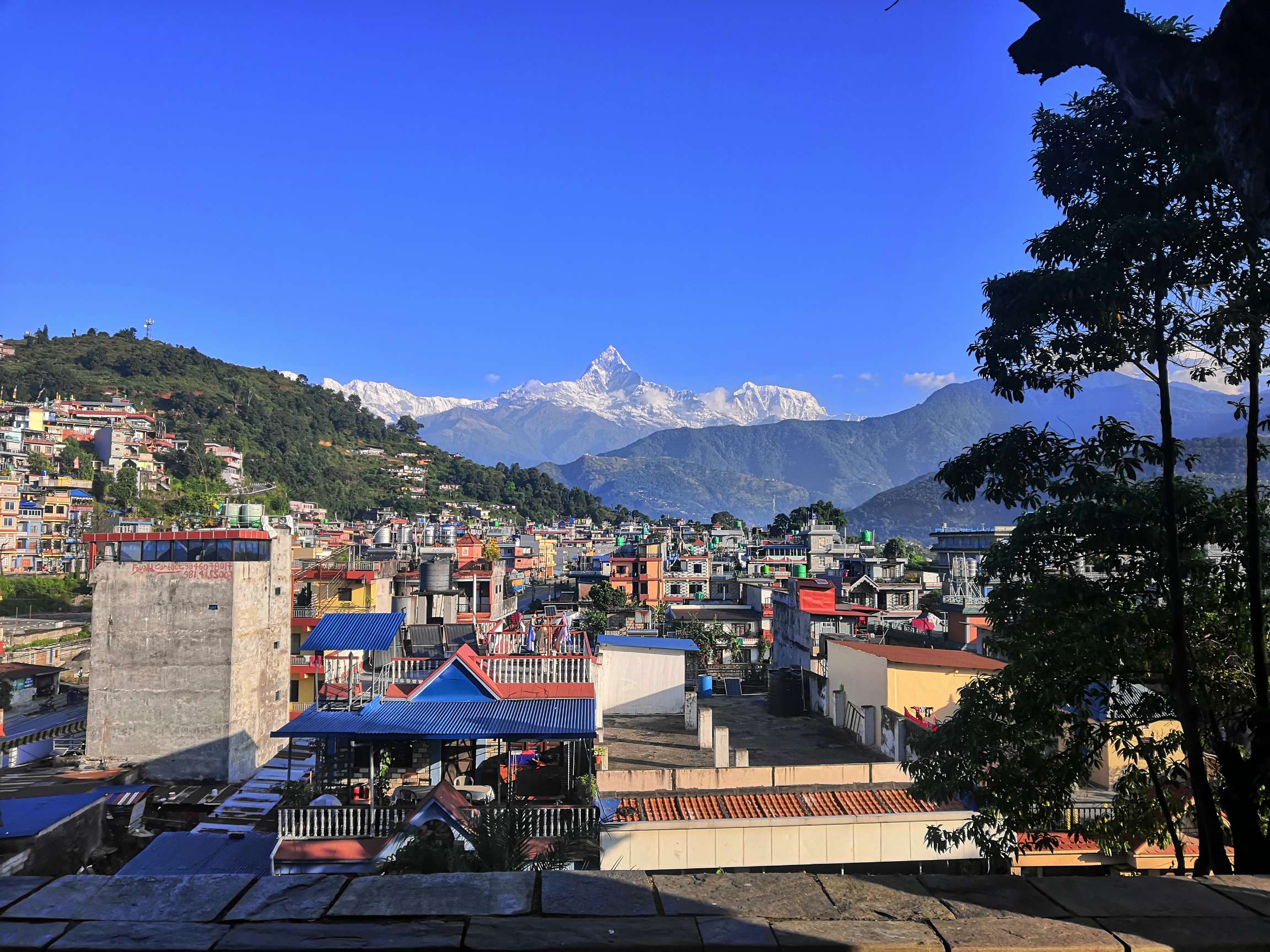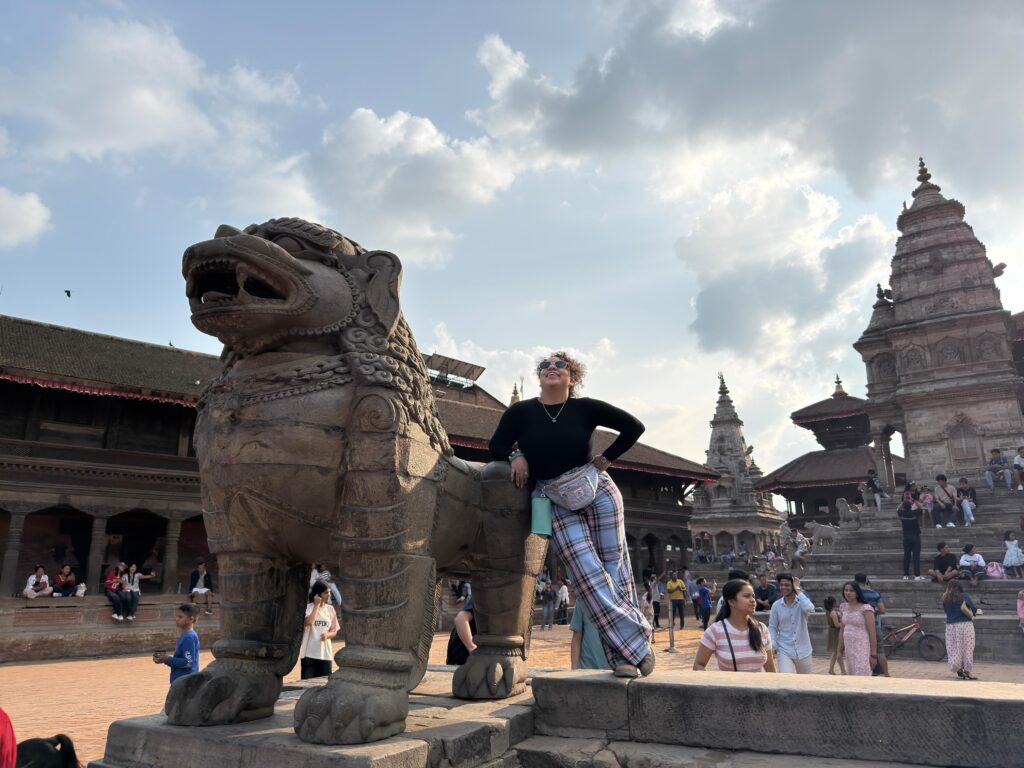Nepal, a country of breathtaking landscapes and rich cultural heritage, offers an unforgettable journey through its most iconic destinations. This 9-day tour package takes you to the heart of Nepal’s diversity, covering Kathmandu, Chitwan (Sauraha), Pokhara, and Lumbini. From ancient temples and bustling cities to serene lakes, lush jungles, and spiritual landmarks, this trip is a perfect blend of culture, nature, and adventure.
Why This Tour?
- This tour is designed to showcase the best of Nepal, offering a holistic experience that combines:
- Cultural Exploration: Discover the ancient heritage of Kathmandu and the spiritual significance of Lumbini.
- Wildlife Adventure: Experience the thrill of jungle safaris in Chitwan National Park.
- Natural Beauty: Relax in the serene surroundings of Pokhara, with its stunning lakes and mountain views.
- Spiritual Journey: Visit Lumbini, the birthplace of Lord Buddha, and immerse yourself in its peaceful ambiance.
Highlights of the Tour.
1. Kathmandu – The Cultural Capital
Kathmandu is a city that lies at the heart of a long-lasting civilization, showcasing a rich history and cultural diversity. The Kathmandu valley is renowned for its UNESCO World Heritage Sites, which consist of seven groups of monuments and buildings. These sites provide evidence of the artistic and historic achievements of the Kathmandu valley, highlighting the reasons for its global fame. Key attractions include:
- Swayambhunath Stupa: Also known as the Monkey Temple, this iconic site offers panoramic views of the valley.
- Pashupatinath Temple: A sacred Hindu temple on the banks of the Bagmati River.
- Bouddhanath Stupa: One of the largest spherical stupas in the world, a hub of Tibetan Buddhism.
- Kathmandu Durbar Square: A historic square filled with ancient palaces, temples, and courtyards.
2. Chitwan (Sauraha) – Wildlife Haven
Sauraha, located near the Rapti River and Chitwan National Park, is a village that serves as the entry point to the park for jungle safaris. It has become a popular tourist destination in Nepal, particularly for observing a variety of wild animals and birds. Visitors to Sauraha can engage in various activities for entertainment, such as riding elephants or vehicles to explore the natural forest of Chitwan National Park. Popular tourist activities in Sauraha include jungle walks, elephant rides, jungle safaris, canoeing, attending the tharu culture program, and viewing the sunrise and sunset.
Chitwan National Park, a UNESCO World Heritage Site, is a paradise for nature and wildlife lovers. Highlights include:
- Jungle Safaris: Spot rhinos, tigers, elephants, and exotic birds on elephant-back or jeep safaris.
- Canoe Rides: Glide along the Rapti River and enjoy the tranquil surroundings.
- Tharu Culture: Experience the unique culture and traditions of the Tharu community through dance performances and village visits.
3. Pokhara – The Lake City
Pokhara valley, known as the city of lakes, the most popular tourist destination in Nepal with its pristine natural beauty and man-made attractions. The proximity of the Himalayas to the north, a popular hill station called Sarangkot, and many lakes within the valley make it an inspiring destination. The breathtaking scenery has been praised by many travel writers, and it is often referred to as the "jewel of the Himalayas" due to its pristine air, snow-capped Annapurna peaks in the background, and tranquil Phewa, Begnas, and Rupa lakes.
Not only are its natural and man-made structures attractive, but it also offers various adventurous activities like paragliding, zip flyer, mountain biking, bunjee jumping etc.
Key attractions include:
- Phewa Lake: Enjoy a boat ride and visit the Tal Barahi Temple.
- Davis Falls and Gupteshwor Cave: Explore these natural wonders.
- Adventure Activities: Try paragliding, zip-lining, or a short hike to the World Peace Pagoda.
- Stunning Views: Witness breathtaking sunrises over the Himalayas from Sarangkot.
4. Lumbini – The Spiritual Heart
Lumbini, a center of spirituality where Buddha was born, is one of the four main pilgrimage sites in Buddhism. The place has most important monument called ‘Ashok Pillar’ which is standing there since 3rd Century B.C. & number of older temples, including the Mayadevi Temple, various new temples and the image (nativity sculpture) depicting his birth inside. The eternal World Peace Flame is a major attraction of the Lumbini located at the center of the garden. We will observe the flame kept glowing uninterrupted 24 hours a day. The flame represents peace in the world and celebrates the International Peace Year. Another important spot close to Lumbini is Tilaurakot, the capital of Shakya Kingdom extends over an area of two and a half miles. The Kingdom of Buddha’s father located in Kaspilvastu near Lumbini where Siddhartha Gautam spent his first 29 years as a prince. The site of ancient Kapilvastu due to its general accordance with local bearings and geographical conditions as described in the Buddhist texts. The site sits in a peaceful meadow on the banks of the Banganga River. Besides the religious and historical significance, the Lumbini sightseeing tour offers cultural insights into the village life of southern Nepal. The Buddhist pilgrimage tour of Nepal unveils how Buddhism was preserved and Buddhist philosophy was developed since the time of Buddha.
Key attractions include:
- Lumbini, the birthplace of Lord Buddha, is a UNESCO World Heritage Site and a place of deep spiritual significance. Highlights include:
- Sacred Garden: The exact birthplace of Buddha, marked by the Mayadevi Temple.
- Ashoka Pillar: An ancient monument erected by Emperor Ashoka.
- Monasteries: Explore monasteries built by various countries, each showcasing unique architectural styles.
- Peaceful Ambiance: Meditate or reflect in the serene surroundings of this spiritual haven.
What Makes This Tour Special?
- Diverse Experiences: From cultural heritage and wildlife adventures to natural beauty and spiritual exploration, this tour offers something for everyone.
- Expert Guidance: Knowledgeable guides provide insights into each destination’s history, culture, and significance.
- Comfortable Travel: All transportation and accommodations are carefully selected for comfort and convenience.
- Sustainable Tourism: We prioritize eco-friendly practices and support local communities.
Who Is This Tour For?
- Culture Enthusiasts: Explore Nepal’s rich heritage and ancient landmarks.
- Nature Lovers: Immerse yourself in the beauty of Nepal’s jungles, lakes, and mountains.
- Spiritual Seekers: Experience the tranquility and spiritual energy of Lumbini.
- Adventure Seekers: Enjoy optional activities like paragliding, zip-lining, and jungle safaris.
Ready to explore the best of Nepal? Book your Kathmandu, Chitwan, Pokhara & Lumbini Tour today! Contact us or visit our website for more details.
Check Kathmandu day trips or The most popular Golden Triangle Tour.
Major Highlights
-
Holy shrine of Lumbini where Buddha was born, explore various interesting aspects related to Budhha and his childhood
-
Explorative visit through major UNESCO world heritage sites of Kathmandu valley
-
Jungle safari and many other natural as well as indigenous activities in Sauraha, Chitwan.
-
Memorable and amazing natural city of Pokhara and its jaw dropping surrounding.
-
World’s best sunrise viewpoint, Sarangkot

